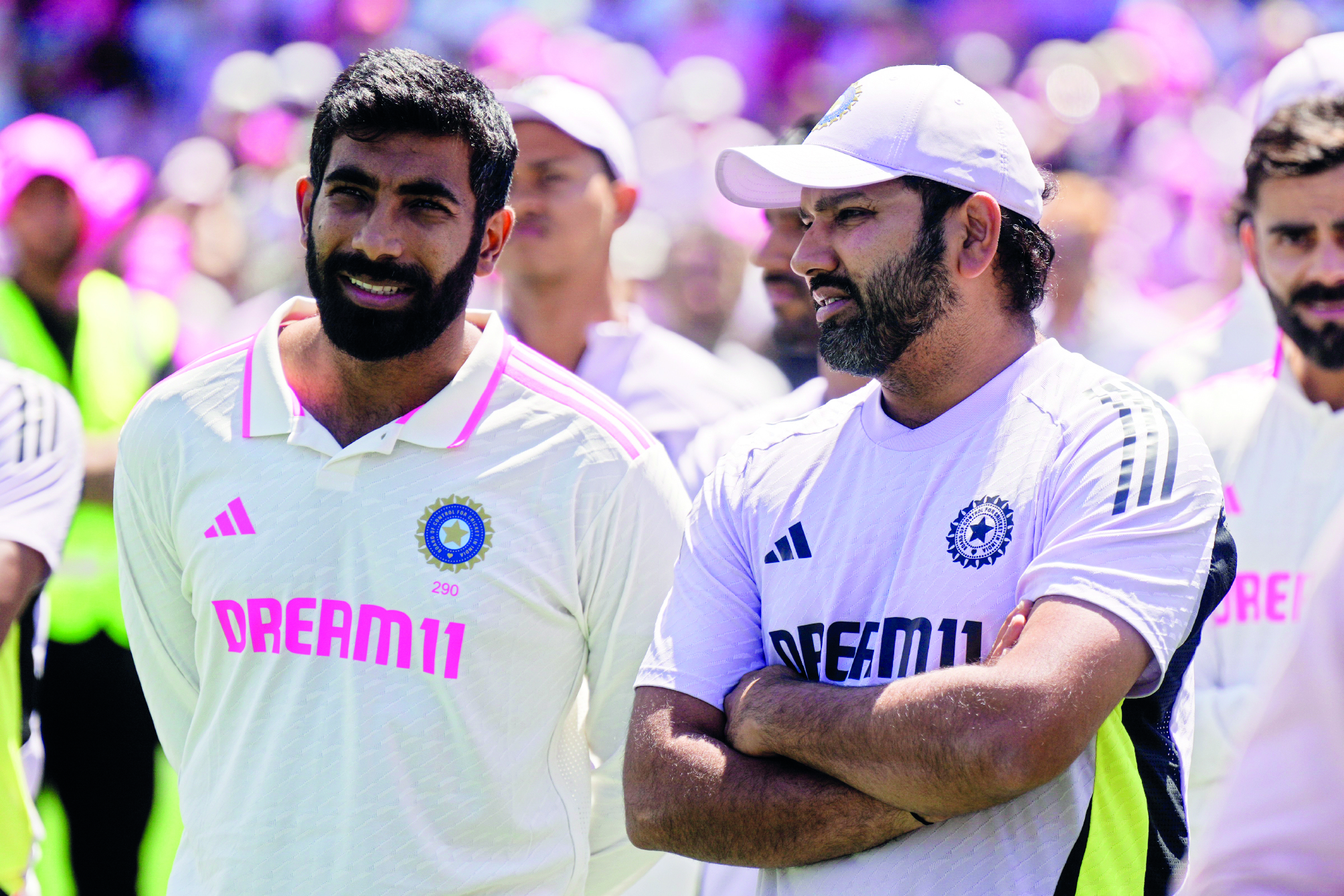India’s WTC dream ends in crushing defeat

New Delhi: A lacklustre Indian side was knocked out of the World Test Championship (WTC) race as Australia secured a commanding six-wicket victory in the fifth Test on Sunday. The win not only clinched the Border-Gavaskar Trophy for Australia after a decade but also highlighted India’s struggles during a difficult transition phase marked by inconsistent performances and underwhelming contributions from ageing batting stars.
With the 3-1 series victory, Australia confirmed their place in the WTC final against South Africa, scheduled at Lord’s from June 11 to 15. The defeat marked a new low for India, as they failed to qualify for the WTC final for the first time since the tournament’s inception, having finished as runners-up in the previous two editions. India’s slim hopes of defending a modest 162-run target were dashed even before the game resumed on Sunday. Jasprit Bumrah, India’s new Test captain and star performer of the series with 32 wickets, was ruled out of bowling due to back spasms. Virat Kohli led the team out in Bumrah’s absence, but it was evident that defending the total would be an uphill task.
Without Bumrah, India’s bowling attack lacked the sharpness required to put pressure on the Australian batters. Prasidh Krishna (3/65) and Mohammed Siraj (1/69) managed occasional breakthroughs but leaked runs with inconsistency. Usman Khawaja (41), Travis Head (34*), and debutant Beau Webster (39*) made light work of the chase, sealing the series for the hosts in just 27 overs.
Despite his stellar performances throughout the series, Bumrah’s efforts could only do so much for a struggling team. His absence in the second innings exposed India’s overreliance on him. Speaking at the post-match presentation, Bumrah expressed his frustration, saying, “Sometimes you have to respect your body. Disappointing to miss out on the spiciest wicket of the series.”
Australia’s Scott Boland (6/45) and skipper Pat Cummins (3/44) exploited India’s batting vulnerabilities, wrapping up the visitors for a paltry 157 in the second innings. Apart from Rishabh Pant’s fighting 61 and Yashasvi Jaiswal’s 22, the rest of the Indian batting lineup collapsed, contributing only 74 runs collectively.
The series exposed India’s longstanding batting woes, with six of their completed innings producing sub-200 scores. Regular captain Rohit Sharma and batting stalwart Virat Kohli, pillars of India’s batting unit for years, struggled with technical flaws. While Jaiswal (391 runs) emerged as the team’s top-scorer, the lack of consistency from other players, including KL Rahul (276 runs) and Rishabh Pant (255 runs), compounded the team’s struggles.
The poor form of Rohit and Kohli has raised questions about their future in the Test setup. Both veterans, though proven match-winners, appear to be past their prime. The upcoming WTC cycle might necessitate difficult decisions, with a focus on nurturing young talent like Jaiswal and Nitish Kumar Reddy, who showed glimpses of potential despite limited experience.
India’s poor performance has also cast a spotlight on head coach Gautam Gambhir’s leadership. Under Gambhir, the team has lost six of their last 10 Tests and suffered an ODI series defeat in Sri Lanka. His headstrong approach, while effective in certain situations, seems to have alienated key players. Instances such as Ravichandran Ashwin’s abrupt retirement and Rohit Sharma’s decision to drop himself mid-series have raised eyebrows. Gambhir’s handling of players like Rishabh Pant has also come under criticism. The young wicketkeeper-batter, known for his attacking instincts, appeared caught between aggressive and defensive approaches, disrupting his natural rhythm. The BCCI must now evaluate whether Gambhir is the right choice to guide the team through this transitional phase.
India’s bowling, traditionally their stronghold, was another area of concern. The absence of Bumrah on the final day highlighted the lack of depth in the pace department. Mohammed Siraj, despite being a senior bowler, has taken 36 matches to reach 100 Test wickets—figures that don’t inspire confidence. Meanwhile, Prasidh Krishna and Harshit Rana remain raw and inconsistent, needing more domestic exposure to develop their skills.
The spin department, once a cornerstone of India’s success, also struggled. Ravindra Jadeja, now more of a batting all-rounder, was ineffective on unhelpful pitches. Washington Sundar, though promising, has yet to establish himself as a reliable wicket-taker in Test cricket.
Amid the disappointments, Yashasvi Jaiswal emerged as a beacon of hope for India’s batting future. His ability to adapt to challenging conditions and deliver crucial runs marked him as a potential successor to India’s batting greats. Nitish Kumar Reddy, too, showed promise with the bat and could become a valuable all-round option if his bowling improves.
India’s dismal performance in Australia serves as a wake-up call for the team and its management. The transition phase, already challenging, has been exacerbated by the decline of senior players and the lack of a robust bench strength. With the next WTC cycle on the horizon, India must make bold decisions—whether it’s phasing out veterans, overhauling the coaching staff, or investing in young talent.
For now, Australia celebrates a well-deserved triumph, eyeing their second WTC mace, while India heads back to the drawing board, searching for answers in what has been a season of stark revelations.



